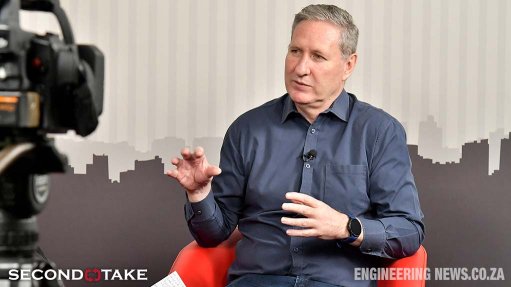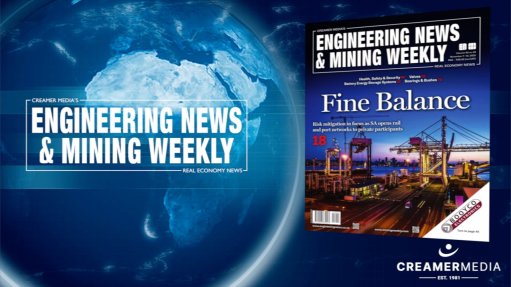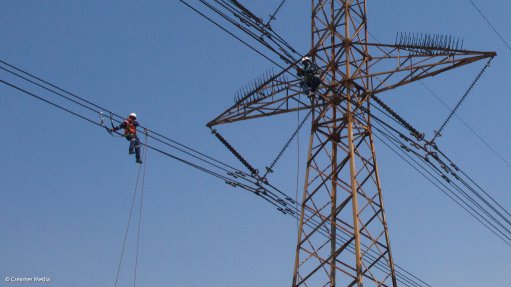Earthquakes demonstrate importance of standards


AMANUEL GEBREMESKEL Building contractors need to be adequately trained to implement necessary standards to ensure that buildings can withstand natural disasters such as earthquakes
The earthquakes in Syria and Türkiye last month demonstrate the importance of implementing national building standards to ensure that all buildings and structures can withstand seismic activity, says industry body Southern African Institute of Steel Construction (SAISC) CEO Amanuel Gebremeskel.
He explains that while countries such as Türkiye have up-to-date building standards with regard to withstanding seismic activity, they are not always applying them in design and construction.
This, therefore, leads to infrastructure – including essential services, such as policing, education and healthcare facilities – being destroyed because of a lack of the latest knowledge, as well as poor design and planning regarding building in seismic areas.
“If a country updates its national codes and standards, but does not retrofit old buildings, a large-magnitude earthquake can cause a lot of destruction, coupled with a high death toll. The consequences of not designing buildings to withstand seismic activity are clearly devastating.”
When designing buildings, engineers consider various aspects, including withstanding dead loads, such as the weight of the building, live loads, such as people and furniture, as well as heavy winds.
However, in areas where seismic activity is possible, such as in Cape Town, in the Western Cape, inertial forces come into play which require advanced design principles, Gebremeskel adds.
Therefore, engineers and contractors need to ensure that they adhere to building regulations and specifications, as well as incorporate the latest local and international design and construction knowledge for buildings to effectively withstand seismic activity.
To minimise the damage, modern national standards require using high-quality steel that is ductile and lightweight to withstand seismic activity. This also helps to reduce loss of life, should an earthquake occur, owing to steel’s ductility and redundancy, as well as its ability to absorb energy without being catastrophically damaged.
Hence, research and development (R&D), compliance with national standards and using quality materials are necessary when designing and constructing infrastructure.
For example, Gebremeskel notes there is a modern standard enforced by the South African Bureau of Standards for the design and construction of buildings to improve resistance to seismic loads.
This standard applies to all building materials, including structural steel and concrete, whereby all buildings, power plants, mines and other infrastructure must adhere to modern standards, particularly relevant for cities such as Cape Town.
However, despite implementing the necessary standards for withstanding seismic activity, he explains that it is still likely that some infrastructure damage will occur because of an earthquake.
“Ensuring no damage at all would be too expensive to construct. As a result, we have come up with methodologies for designing buildings that can withstand damage through their in-built, inherent ductility and redundancy, owing to the correct design and quality of materials having been incorporated into the structure.”
Training
Gebremeskel warns that engineers and building contractors need to be adequately trained to implement the standards to ensure that buildings can withstand natural disasters such as earthquakes.
“As the SAISC, we take an active role in contributing to the industry’s adherence to these standards by providing a unique and tailored training programme to teach engineers and contractors how to design and build to withstand earthquakes. We are currently the only entity in the country providing training courses to impart this knowledge to the industry holistically.”
Article Enquiry
Email Article
Save Article
Feedback
To advertise email advertising@creamermedia.co.za or click here
Comments
Press Office
Announcements
What's On
Subscribe to improve your user experience...
Option 1 (equivalent of R125 a month):
Receive a weekly copy of Creamer Media's Engineering News & Mining Weekly magazine
(print copy for those in South Africa and e-magazine for those outside of South Africa)
Receive daily email newsletters
Access to full search results
Access archive of magazine back copies
Access to Projects in Progress
Access to ONE Research Report of your choice in PDF format
Option 2 (equivalent of R375 a month):
All benefits from Option 1
PLUS
Access to Creamer Media's Research Channel Africa for ALL Research Reports, in PDF format, on various industrial and mining sectors
including Electricity; Water; Energy Transition; Hydrogen; Roads, Rail and Ports; Coal; Gold; Platinum; Battery Metals; etc.
Already a subscriber?
Forgotten your password?
Receive weekly copy of Creamer Media's Engineering News & Mining Weekly magazine (print copy for those in South Africa and e-magazine for those outside of South Africa)
➕
Recieve daily email newsletters
➕
Access to full search results
➕
Access archive of magazine back copies
➕
Access to Projects in Progress
➕
Access to ONE Research Report of your choice in PDF format
RESEARCH CHANNEL AFRICA
R4500 (equivalent of R375 a month)
SUBSCRIBEAll benefits from Option 1
➕
Access to Creamer Media's Research Channel Africa for ALL Research Reports on various industrial and mining sectors, in PDF format, including on:
Electricity
➕
Water
➕
Energy Transition
➕
Hydrogen
➕
Roads, Rail and Ports
➕
Coal
➕
Gold
➕
Platinum
➕
Battery Metals
➕
etc.
Receive all benefits from Option 1 or Option 2 delivered to numerous people at your company
➕
Multiple User names and Passwords for simultaneous log-ins
➕
Intranet integration access to all in your organisation



















